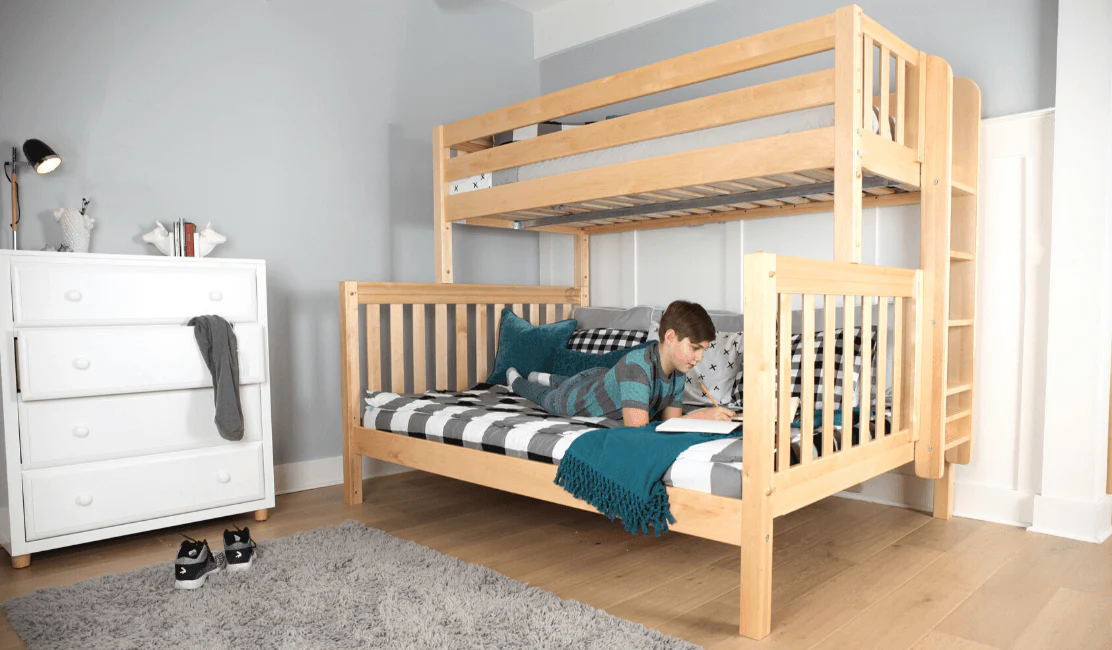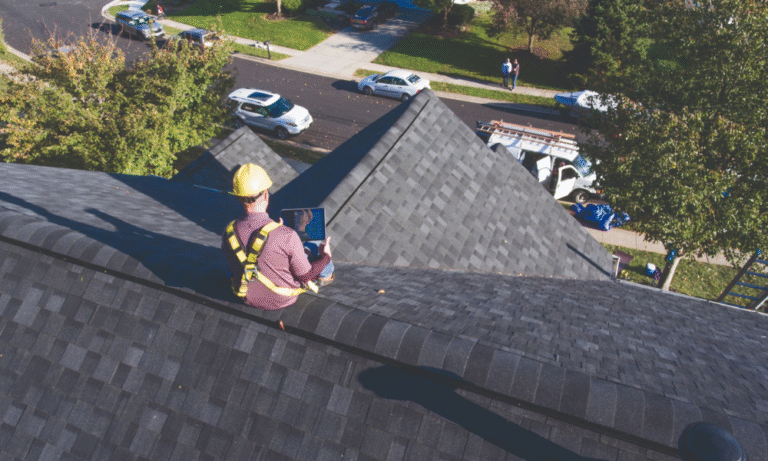Estimated reading time: 5 minutes
When designing a bedroom — especially for kids, teens, or shared spaces — the choice of bed can dramatically impact comfort, functionality, and room layout. Two popular options that often go head-to-head are bunk beds and twin beds.
While both are designed for single sleepers, they offer different benefits and limitations. In this guide, we’ll break down the differences between bunk beds vs twin beds, discuss ideal use cases, compare safety, cost, and versatility — and help you make the best choice for your room.
What is a Twin Bed?
A twin bed is a standard single-person bed measuring approximately 38 inches wide by 75 inches long. It’s one of the most common bed sizes for children, teenagers, and guest rooms.
Benefits of Twin Beds:
- Simple and functional for solo sleepers
- Easy to move and reposition
- Fits into small rooms or narrow layouts
- Wide variety of designs and styles
Twin beds are great for rooms with one occupant and allow for flexibility in furniture placement.
What is a Bunk Bed?
A bunk bed consists of two beds stacked vertically, allowing two people to sleep in the same floor space as a single bed. The most common setup includes two twin-sized beds, one on top and one below. Other variants include twin-over-full or loft beds with a desk or play area underneath.
Benefits of Bunk Beds:
- Saves floor space in shared rooms
- Ideal for siblings or sleepovers
- Some models come with built-in storage or desks
- Fun and engaging for kids
Bunk beds are particularly useful in smaller bedrooms where maximizing space is essential.
Bunk Beds vs Twin Beds: Key Differences
| Feature | Bunk Bed | Twin Bed |
|---|---|---|
| Size | Two beds stacked (twin-over-twin) | One standard twin bed |
| Space Efficiency | High — saves horizontal floor space | Moderate — takes full bed footprint |
| Best For | Siblings, shared rooms, small spaces | Single sleepers, flexible arrangements |
| Setup | More complex (assembly required) | Simple to set up |
| Safety | Risk of falling (top bunk) | Safe and low to ground |
| Age Suitability | 6+ years (for top bunk) | Any age |
| Storage Options | Often includes drawers or shelves | Can be paired with under-bed storage |
Space-Saving Comparison
If you’re working with a tight floor plan, bunk beds clearly win in terms of vertical space efficiency. You’re essentially getting two beds in the space of one.
- Bunk Beds: Ideal for rooms under 120 sq ft or where siblings need to share space.
- Twin Beds: Better for minimalistic setups or if space isn’t an issue.
Want room for desks, play areas, or additional storage? A bunk bed helps free up more square footage.
Safety Considerations
Safety is a major factor, especially when beds are used by children.
Bunk Bed Safety:
- Top bunk is generally not recommended for kids under 6 years old
- Requires guard rails, secure ladder, and low ceiling clearance
- Regular checks needed to ensure stability
Twin Bed Safety:
- No elevation = no risk of falling
- Suitable for all age groups, including toddlers
- Easier for parents to access younger kids
If you’re prioritizing safety for young children, a twin bed is often the safer choice.
Cost Comparison
| Bed Type | Average Price Range |
|---|---|
| Twin Bed (basic) | $100 – $300 |
| Bunk Bed (basic) | $250 – $800+ |
| Twin Bed (premium with storage) | $300 – $700+ |
| Bunk Bed with features (desks, storage) | $600 – $1,500+ |
Bunk beds cost more due to added materials, complexity, and functionality. However, they can replace multiple furniture items (like desks or dressers), making them cost-effective long-term.
Versatility and Room Functionality
Twin Beds:
- Can be placed side by side, used as a daybed, or converted into a trundle
- Easy to move or repurpose as your child grows
- Can be paired with storage drawers or a canopy frame
Bunk Beds:
- Some models convert into two separate twin beds
- Loft styles add functionality like built-in desks or shelves
- Less flexible in rearrangement due to vertical design
If adaptability is important, twin beds offer more layout options. If maximizing function in one footprint is the goal, bunk beds are ideal.
Ideal Use Cases: Who Should Choose What?
Choose a Bunk Bed If:
- You have two children sharing a room
- You’re working with limited space
- Your kids love fun and interactive furniture
- You want a bed + desk + storage combo in one piece
Choose a Twin Bed If:
- You only need to sleep one person
- You want a simple, clean layout
- You’re designing a guest room or spare room
- Safety is a concern for young children
Design and Aesthetic
Both bunk beds and twin beds come in a variety of materials, styles, and finishes, including:
- Wood (pine, oak, maple)
- Metal (for modern or minimalist looks)
- Upholstered headboards
- Themed beds (especially for kids)
Design Tip:
Bunk beds tend to dominate the room’s look due to their size and height. Twin beds offer more flexibility for layered bedding, wall art, and decor.
FAQs
Can I separate a bunk bed into two twin beds?
Yes, many modern bunk beds are designed to be detachable and used as two standalone twin beds.
Are bunk beds safe for adults?
Some heavy-duty bunk beds are rated for adult use, especially in hostels or dormitories. Check weight limits before purchasing.
Is it cheaper to buy two twin beds or a bunk bed?
Buying two basic twin beds is often cheaper upfront, but a bunk bed may be more space- and cost-efficient for small rooms.
What age is appropriate for a bunk bed?
Children should be at least 6 years old to safely sleep on the top bunk.
Do bunk beds come with mattresses?
Usually, mattresses are sold separately for both bunk beds and twin beds.
Conclusion: Which Bed Should You Choose?
Choosing between a bunk bed vs twin bed ultimately comes down to your space, family needs, safety concerns, and future flexibility.
- Go with a bunk bed if you’re furnishing a shared room, want to maximize space, or combine sleep and function in one setup.
- Choose a twin bed if you’re looking for simplicity, safety, or a versatile sleeping arrangement.
Still undecided? Think about how long the bed will be used, how often guests or siblings share rooms, and how your space may evolve.



